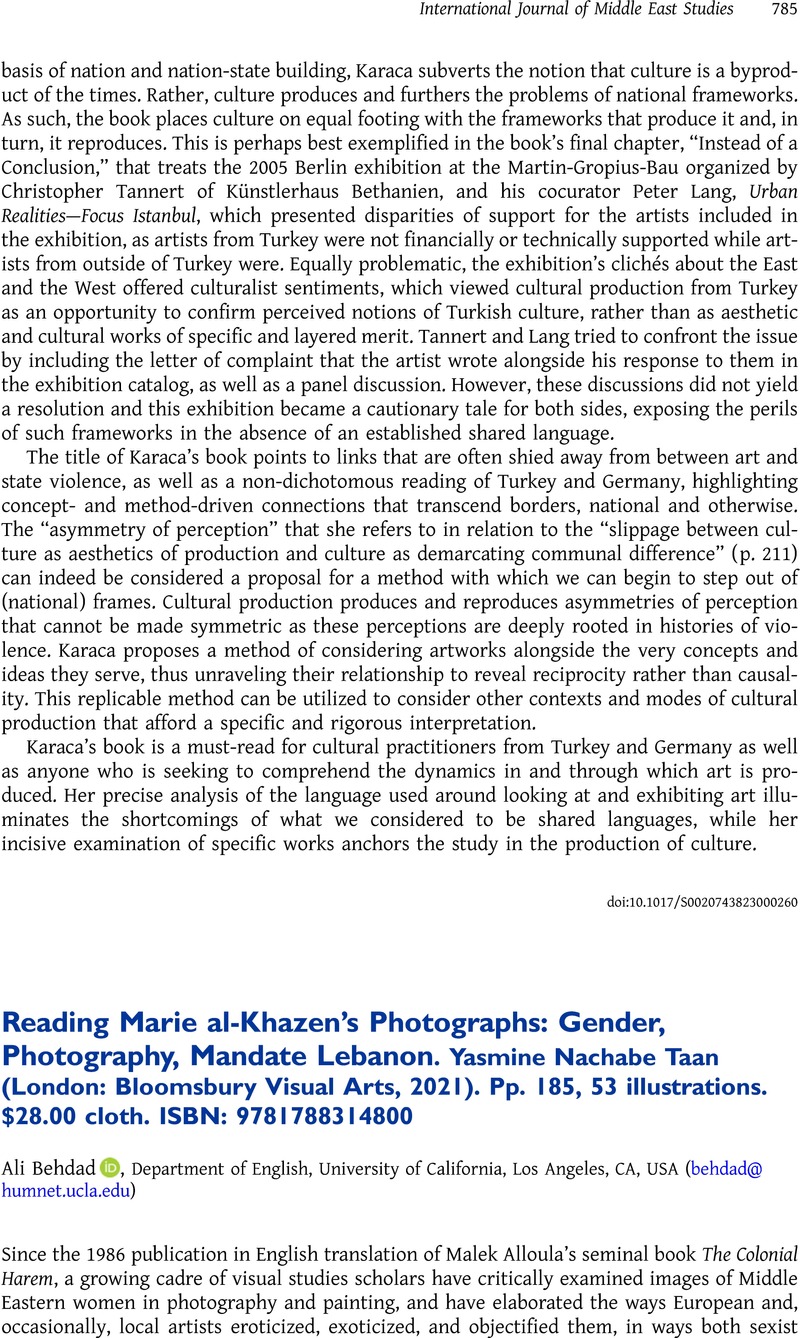No CrossRef data available.
Article contents
Reading Marie al-Khazen's Photographs: Gender, Photography, Mandate Lebanon. Yasmine Nachabe Taan (London: Bloomsbury Visual Arts, 2021). Pp. 185, 53 illustrations. $28.00 cloth. ISBN: 9781788314800
Review products
Reading Marie al-Khazen's Photographs: Gender, Photography, Mandate Lebanon. Yasmine Nachabe Taan (London: Bloomsbury Visual Arts, 2021). Pp. 185, 53 illustrations. $28.00 cloth. ISBN: 9781788314800
Published online by Cambridge University Press: 09 February 2023
Abstract
An abstract is not available for this content so a preview has been provided. Please use the Get access link above for information on how to access this content.

- Type
- Book Review
- Information
- Copyright
- Copyright © The Author(s), 2023. Published by Cambridge University Press



